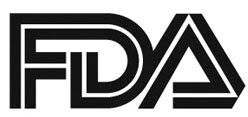FDA Grants Pembrolizumab Priority Review for TMB-High Tumors
The FDA has accepted and granted a priority review to a supplemental Biologics License Application for pembrolizumab for the treatment of adult and pediatric patients with unresectable or metastatic solid tumors with tissue tumor mutational burden-high who have progressed following prior treatment and who have no satisfactory alternative treatment options.

The FDA has accepted and granted a priority review to a supplemental Biologics License Application (sBLA) for pembrolizumab (Keytruda) for the treatment of adult and pediatric patients with unresectable or metastatic solid tumors with tissue tumor mutational burden-high (TMB-H) who have progressed following prior treatment and who have no satisfactory alternative treatment options. Merck, the developer of the antiPD-1 antibody, announced the priority review in a press release.1
Use of pembrolizumab in this setting calls for TMB of at least 10 mutations per megabase to be determined by an FDA-approved test. A Prescription Drug User Fee Act target action date of June 16, 2020 has been set for the potential accelerated approval.
“From the start, biomarker research has been a critical aspect of our clinical program evaluating Keytruda monotherapy,” said Scot Ebbinghaus, MD, vice president, clinical research, Merck Research Laboratories, in the press release. “TMB has been an area of scientific interest to help identify patients most likely to benefit from Keytruda. We look forward to working with the FDA throughout the review process to help bring Keytruda monotherapy to patients with cancer in the second-line or higher treatment setting, where options remain limited.”
The sBLA is supported by findings from the ongoing phase II KEYNOTE-158 trial, which is exploring the use of the immunotherapy agent in patients with advanced solid tumors (NCT02628067). Findings from the TMB-H population were presented at the 2019 ESMO Congress.2
In the study, tissue TMB was assessed using the FoundationOne CDx assay and TMB-H status was defined as at least 10 mutations/megabase. All patients received 200 mg of intravenous pembrolizumab every 3 weeks.
Among the patients evaluable for tissue TMB status in the KEYNOTE-158 trial, 99 (13.2%) had TMB-high tumors. These patients were followed for a median of 11.7 months (range, 0.5-33.0). The outcomes of these patients were compared with 652 patients with nonTMB-H tumors who were followed for a median of 13.1 months (range, 0.4-34.3).
In both of these groups the median patient age was 61 years, and most of the patients were female and had an ECOG performance status of 1. In the TMB-H group, 65.7% of patients had positive PD-L1 expression, and 14.1% had microsatellite instabilityhigh (MSI-H) tumors. All but 1 patient had received prior therapy in the recurrent or metastatic setting. Twelve patients had received at least 4 prior regimens.
The most common tumor types in the TMB-H group were small cell lung cancer (34.3%), cervical (16.2%, endometrial (15.2%), and anal (14.1%). Comparatively, the most common tumor types in the nonTMB-H group were mesothelioma (12.7%), neuroendocrine (12.3%), salivary (12.0%), and endometrial (10.3%).
An overall response rate (ORR) of 30.3% (95% CI, 21.5%-40.4%) was achieved in the TMB-H group, consisting of complete responses in 4.0% and partial responses in 26.3%. Stable disease was also seed in 14.1%. When excluding patients with MSI-H tumors, the ORR was 27.1%, and in the nonTMB-H group, the ORR was 6.7%. The median duration of response was not reached in either group.
Median progression-free survival (PFS) in both groups was 2.1 months. At 1 year, the PFS rates were 26.4% and 14.1% in the TMB-H and nonTMB-H groups, respectively, and at 2 years the rates were 18.9% and 6.5%.
The median overall survival (OS) was higher in the nonTMB-H group at 13.0 months (95% CI, 11.5-14.6) compared with 11.7 months (95% CI, 8.2-19.1) in the TMB-H group. At 1 year the OS rates were 49.1% for the TMB-H population and 52.5% for the non–TMB-H patients; at 2 years the OS rates were 34.5% and 31.1%, respectively.
A low correlation was found between tissue TMB status and PD-L1 expression (P= .18).
Safety findings in this population were consistent with the known toxicity profile for pembrolizumab.
This would potentially be the second tumor-agnostic approval for pembrolizumab, which is also approved for the treatment of patients with MSI-H or mismatch repair deficient solid tumors.
Reference:
- Merck Receives Priority Review from FDA for Second Application for KEYTRUDA® (pembrolizumab) Based on Biomarker, Regardless of Tumor Type [news release]. Kenilworth, NJ: Merck; March 7, 2020.
- Marabelle A., Fakih M, Lopez J, et al. Association of Tumor Mutational Burden with Outcomes in Patients with Select Advanced Solid Tumors Treated with Pembrolizumab in KEYNOTE-158. AnnOncol. 2019;30(suppl_5):v475-v532. doi: 10.1093/annonc/mdz253.